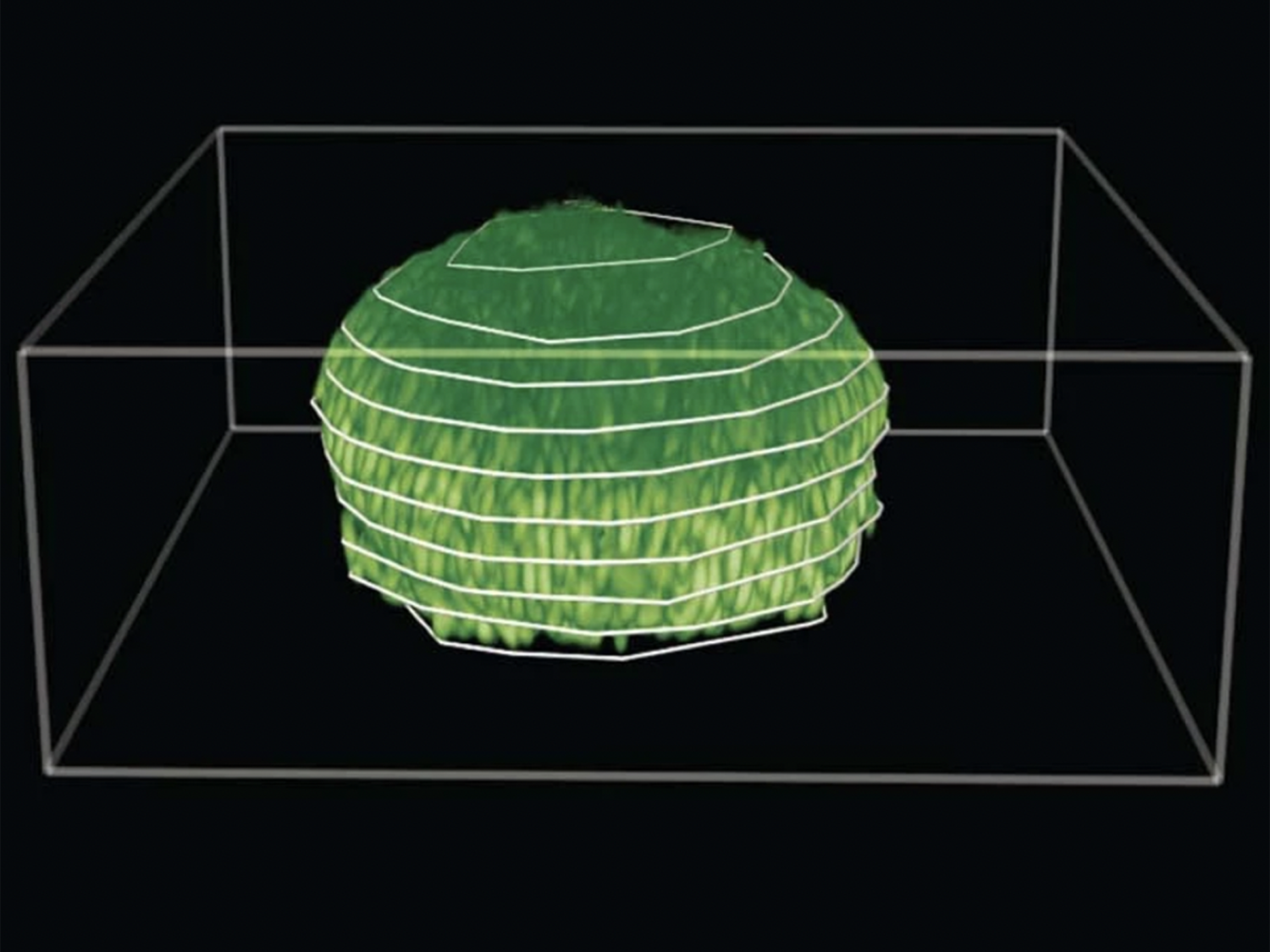Dental plaque, gut bacteria, and the slick coating on river rocks exemplify biofilms—structured communities of microorganisms that inhabit human bodies and the surrounding environment.
 Three-dimensional reconstruction of a biofilm grown under a 0.5% agarose gel. The scale bar is 10 µm. Image Credit: Provided by Jing Yan.
Three-dimensional reconstruction of a biofilm grown under a 0.5% agarose gel. The scale bar is 10 µm. Image Credit: Provided by Jing Yan.
A recent investigation, spearheaded by researchers from Penn State, unveils the precise mechanisms through which developing biofilms mold their surroundings and refine their internal structures to harmonize with their environment.
These discoveries could hold significance across diverse applications, ranging from combatting diseases to designing innovative forms of dynamic living materials.
In the case of bacteria, they grow, divide, and apply forces to each other and their surroundings. As such, growing bacteria have the potential to shape the environment, changing the environment they live in, so we were interested in understanding the reciprocal interactions between the growing biofilm and the environment where it grows.”
Sulin Zhang, Study Corresponding Author and Professor, Engineering Science and Mechanics and Biomedical Engineering, The Pennsylvania State University
Zhang, the researcher behind the recently published study in Nature Physics, collaborated with an interdisciplinary team from the Massachusetts Institute of Technology and Yale. Their investigation into the interaction encompassed theoretical, experimental, and computational dimensions.
The study utilized biofilms produced by Vibrio cholerae, a bacterium responsible for cholera, as a model system to illustrate the autonomous shaping and organizing capabilities of a 3D growth system.
In their exploration, the researchers grew the biofilm between a soft hydrogel and a rigid glass substrate, mimicking the confined spaces in which biofilms naturally thrive. Employing single-cell imaging, agent-based simulations, and continuum mechanics theory, they scrutinized the evolving biofilm.
The study revealed that biofilms, in such conditions, not only shape themselves but also mold their boundaries into an efficient configuration termed “active nematics,” characterized by the alignment of self-propelled molecules in parallel lines rather than layers.
We found that biofilms take advantage of growth-induced stresses to shape their environment and create a nematic structure. This takes us a lot closer to being able to control the morphology, the packing and ordering of the biofilm.”
Jing Yan, Study Co-Corresponding Author and Assistant Professor, Molecular, Cellular and Developmental Biology, Yale University
Zhang elaborated that grasping the feedback loop involving biofilm growth, stress derived from growth, and its surrounding environment holds the potential to facilitate the regulated growth of advantageous biofilms. It could lead to eradicating detrimental ones and even foster the creation of novel categories of active materials that can adapt to, and actively modify, their environment.
Yan emphasized the significant relevance of this information in the healthcare sector. In the realm of human and animal health, biofilms play a crucial role in fostering disease development by evading the immune response.
The well-coordinated structure of bacterial biofilms imparts a high level of resistance to traditional antibiotics, rendering them exceptionally challenging to address. According to the American Society for Microbiology, a majority of persistent antibiotic-resistant infections can be attributed to biofilms.
When a bacteria enter into the body, they grow into an infection as biofilms — and they’re in a confined environment: your gut.”
Jing Yan, Study Co-Corresponding Author and Assistant Professor, Molecular, Cellular and Developmental Biology, Yale University
Enhancing the comprehension of how diseases driven by biofilms can flourish in such environments will empower researchers to devise novel strategies for disrupting this growth, he further explained.
“What we’ve learned will aid in developing strategies to tackle these infections. The phenomena discovered here could lead to new strategies to suppress the growth of harmful biofilms and give us the ability to design and program beneficial ones,” stated Changhao Li, a Doctoral Candidate in computational mechanics at Penn State and co-author of the paper.
Growing biofilms actively alter host environment
A microscopic recording, via a technique called z-scan, of a biofilm grown under a 2% agarose gel for 20 hours. The total height scanned in the video is 10.4 μm. The scale bar is 10 μm. Video Credit: Jing Yan.
Source:
Journal reference:
Nijjer, J., et al. (2023) Biofilms as self-shaping growing nematics. Nature Physics. doi.org/10.1038/s41567-023-02221-1.